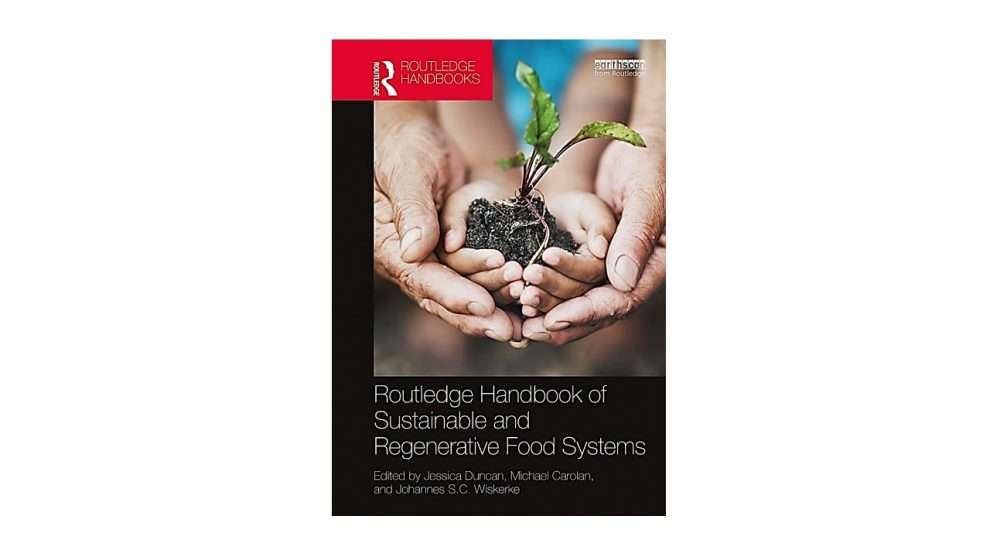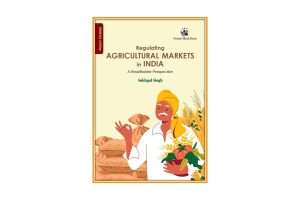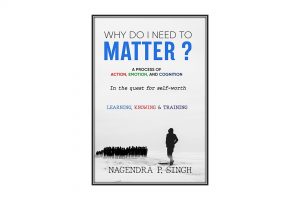Routledge (2020)
Jessica Duncan, Michael Carolan and Johannes SC (Eds)
ISBN: 9781138608047
Hardback: GBP 190
eBook: GBP 35.99
Pages: 478
By 2050, the world will need 70 per cent more food to feed an additional two billion people (FAO 2009). The main challenges here are not can we do it? but can we do it sustainably? Merely feeding well and sustaining the current situation is not enough. We should not only sustain but improve our food and environment. ‘Regenerative Food Systems’ is one crucial step to move beyond sustainability. As per California State University (2017) regenerative agriculture is: ‘a holistic land management practice that leverages the power of photosynthesis in plants to close the carbon cycle, and build soil health, crop resilience and nutrient density.’
This compelling Handbook advocates the critical role of Regenerative Food Systems in achieving agricultural sustainability. It posits food as the centre of holistic well-being (biological, spiritual, financial, ecological, cultural) of individuals and communities. Several practices, such as small-scale fisheries, livestock, coffee production and role of micro mills, sustainable markets, food sharing, social finance, entrepreneurship, foraging, seed sharing and collection, digitalization, rural-urban connections, regenerative landscapes, urban food planning, recycling etc., are dissected from a regenerative perspective in this book. Special and elaborate attention is given to indigenous food practices and agroecology.
Furthermore, food-related justice, rights, and labour are presented as the most obvious and essentials components of the Regenerative Food Systems. Personally, this work was a great source (cf. Chapter 6) that helped me to conceptualize the reasons behind the infamous tussle between small-scale farmers and lawmakers. The ongoing farmers’ protest in India against the three new farm laws (2021) is one such pertinent example. This book made me realize how often, and easily, traditional and local agrarian cultures are overlooked by policymakers. So this book pleads for the inclusion of traditional food generation practices at local, national, and international levels.
Indigenous identities, activism and awareness are rising throughout the world. In this book as well, there is a great deal of focus put on understanding the indigenous livelihood and food systems by comparing the nutrition vs. production framework (Chapters 3, 4, 5 and 6) and its role in maintaining the sustainable food models and sovereignty. I especially enjoyed the case studies of indigenous people (Desana people from the Amazon, Hopi from North America) and their traditional food systems. The book emphasizes the importance of policies (such as Right to Adequate Food [RtAF], rights of indigenous people) that can be implemented at all levels.
The topical scope of the book is very relevant and futuristic. The arrangement of the chapters is also logical and contains significant academic references and facts. Each chapter can be read separately, but I recommend thorough reading of the whole for holistic understanding. Despite being lengthy the book successfully engages the reader and is a great investment of time and focus.
The purpose of the book
This book aims to establish Regenerative Food Systems both as a goal and means for Agricultural Sustainability. It covers almost every essential topic and aspect of regenerative food systems and strongly advocates the need to re-evaluate the drivers of sustainability.
Who should read this book?
The information in this book is geared towards both agricultural and non-agricultural practitioners. I think anyone who cares for a sustainable future and doesn’t know much about Regenerative Food Systems should read this book. It is required reading for development practitioners, indigenous activists, economists, scientists, academicians, students, farmers, citizens, government officials, civil society activists and policy makers. Now, I would like to highlight some of the key ideas/lessons that an Extension practitioner and researcher (being one myself) can get from this book.
Lessons for Extension practitioners
This book should be read by every extension practitioner as it is power-packed with numerous case studies that can be of special interest to those working both at the grassroot and higher levels. To quote a few:
- The case study of the Regenerative Food Systems prevalent in traditional rice cultivation of the Sundanese community of Kasepuhan Ciptagelar in Indonesia is worth reading. Extension agents can find a number of tips regarding various indigenous technologies, e.g., simultaneous harvesting of rice by the community to prevent disease outbreak; planting more than one rice variety (at least one being traditional) in a patch of land to enable cross-pollination so as to develop new landraces; their ways of storing the rice to achieve communal food security.
- Allin Kawsay and Māuri Ora (loosely translated as ‘living well’ and ‘good life’, respectively) philosophies of the indigenous peoples of Latin America resonate with the sustainable food principles. Many interesting research topics and lessons can be derived from comparing these two. Replicable models – based on these philosophies – can be designed and tested for addressing sustainability issues in other locations.
As an extension agent, one is expected to be aware of these topics and practices. Understanding how the local communities revere, grow, consume, and share food is an important driver of rapport-building for the extension agent.
Implications for researchers
This Handbook also brings together the experiences of researchers from across the globe and offers practical solutions to various agricultural issues both at local and global levels. For example, there are success stories from South Dakota where the indigenous Lakota tribe actively engages in various sustainable food projects (e.g., water and buffalo restoration projects). It also compiles many innovative concepts, such as caring farming (cf. case studies from Netherlands and Italy in Chapter 10), socialized food markets, symbiotic food systems, commons and commoning, cross generational knowledge, circular food economies, telephone farming. I hope social sciences scholars can find a number of research questions there too. Researchers can also select the discussion questions given at the end of each chapter to formulate their own research topics.
Apart from the various case studies, the Handbook also contains a discursive analysis of a famous symposium conducted by FAO in 2016 (Chapter 7). Here, the varied opinions and preferences of researchers, government officials, farmers and civil society representatives towards agroecology and its contribution to Regenerative Food System is compared. This analysis is one of a kind and some very practical recommendations for the policy process emerge out of it. The format of this symposium can be borrowed by organizers for upcoming symposiums and discussions on similar topics. Researchers can also replicate such studies in their future work.
The book recommends going beyond the university-farm community partnership and taking issues up to international convention and policy platforms. One such case study is presented in Chapter 6 – referring to the Dene community of Canada and Wilfrid Laurier University. Universities can also contribute by writing such projects and grants.
This publication can guide those who influence the policy-designing process in agriculture. Since, agricultural scientists co-create these policies along with other important stakeholders, this book can be a great reference tool for them. Case studies of the indigenous people from New Guinea, Botswana, Indonesia can be of great use to nutritionists, health experts, epidemiologists, anthropologists, agronomists, and ecologists. In Chapter 5 there is an excerpt (p. 55-56) indicating the importance of language as a carrier of cultural cues that lose their holistic meanings when literally translated. Hence, this can be a good chapter for linguists as well.
Why am I recommending this book?
The deliberations on important issues, such as global food systems dominating local food habits raise serious concerns. I like the way the book boldly discusses failure in terms of the many past attempts in achieving sustainability (such as ‘farm to fork’ system in Chapter 19). This highlights the dire need for redirecting our focus towards regenerative food systems. It narrates how local stories can be weaved into global policies and how regenerative food systems can support that. It stresses the role of local family farms, community gardens, local family farmers’ unions, inclusion of younger generation in the family farming system in enabling sustainability.
The book takes a clear stand against monocropping, commercialization of food system and busts many myths around sustainability. There is an interesting case on page 29 that highlights how the slash and burn practices of some indigenous tribes in Indonesia are blamed as being a major environmental villain when they are not. It also draws our attention towards emerging issues such as criminalization of environmental projects, deconstruction of cultural hegemony, productivism approach towards food security, and many more.
Farmers have also contributed to the substance of this book through various case studies. Chapters 3, 4, 5, and 6 document the opinions of many indigenous farmers from Indonesia, New Zealand, Peru, South Dakota, Brazil and Canada about their traditional practices and philosophies. Moreover, as I mentioned earlier, farmers’ opinions on sustainability were recorded in a famous FAO symposium and compared with those of researchers, government officials, and civil society representatives. Hence, inclusion of farmers makes this work even more valid and relevant.
The structure of the book is comprehensive and logical and compels the readers to think and research more on the theme. The literature review is up to date and thorough. However, I am placing a few suggestions that could be considered for later edition(s) of this handbook.
- The book stands strongly with the available work in this field (such as Schreefel et al. 2020; White 2020; Weis & Ellis 2020). However, inclusion of some other essential topics related to the theme, such as soil quality, agrotourism, agroforestry, etc., is suggested for upcoming editions.
- Inclusion of some visual materials (graphs, figures, illustrations, etc.) can make the work even more interesting and informative.
- Explanation of the concept of regenerative food systems right at the beginning would have made subsequent reading easier for the non-experts in this field. This explanation comes on page 4 which is brief and a bit late. Detailed explanation of the basic concepts would have made the comparison of the regenerative food systems with SDGs (in the introduction) more meaningful.
End Note
The Routledge Handbook of Sustainable and Regenerative Food Systems-Routledge (2020) is an effort in the direction of understating the complex, yet very crucial, concepts of ‘Sustainability’ and ‘Regenerative Food Systems’.
It advocates viewing food as a complex social, economic, and political entity and introduces the metaphor of ‘full plate’ (holistic and simplistic) as a mode of ensuring food security. It also highlights the irony of both obesity and malnutrition existing in the same place. It challenges the productivity aspect of food security by calling it overrated, and conversion of agriculture to agribusiness as harmful. The book also opens doors for further discussion on the undervalued role of young women in rural communities. It also addresses various myths and controversies around food and related concepts and policies.
I am sure the Handbook will not only help readers in understanding the critical concepts of Sustainable and Regenerative Food Systems but also in practicing them in the real world. Kudos to the authors and the team of editors for conceptualizing and executing such a pioneering project, which will surely become a standard reference work in this field.
References
Food and Agriculture Organisation of the United Nations. 2009. How to Feed the World in 2050. http://www.fao.org/fileadmin/templates/wsfs/docs/expert_paper/How_to_Feed_the_World_in_2050.pdf
California State University. 2017. What is regenerative agriculture? Regenerative Agriculture Initiative, Chico; http://www.csuchico.edu/sustainablefuture/aginitiative/; The Carbon Underground, https://thecarbonunderground.org/ ; published online, 16 Feb. 2017.
Schreefel L, Schulte RPO, de Boer IJM, Schrijver AP and van Zanten HHE. 2020. Regenerative agriculture – the soil is the base. Global Food Security 26, 100404.
Weis T and Ellis RA. 2020. Animal functionality and interspecies relations in Regenerative Agriculture. Routledge Handbook of Sustainable and Regenerative Food Systems.
White C. 2020. Why Regenerative Agriculture? American Journal of Economics and Sociology 79(3):799-812
 Goldi Tewari is an independent researcher from India currently based in Portland, USA. She earned her PhD in Communication Science from Ghent University, Belgium, through a European Commission sponsored project. She did her Master’s in Agricultural Extension from UAS, Bangalore, India. Having both Agriculture and Communication Science qualifications, she strongly believes in interdisciplinary research. To help researchers across various disciplines with their shared problem, she co-created Edusecrets with her husband, Anupum Pant. Previously, she has enjoyed working in both academic and industrial sectors. Apart from formal work interests she binges on old TV shows and cookies. You can read her other publications here.
Goldi Tewari is an independent researcher from India currently based in Portland, USA. She earned her PhD in Communication Science from Ghent University, Belgium, through a European Commission sponsored project. She did her Master’s in Agricultural Extension from UAS, Bangalore, India. Having both Agriculture and Communication Science qualifications, she strongly believes in interdisciplinary research. To help researchers across various disciplines with their shared problem, she co-created Edusecrets with her husband, Anupum Pant. Previously, she has enjoyed working in both academic and industrial sectors. Apart from formal work interests she binges on old TV shows and cookies. You can read her other publications here.





Add Comment